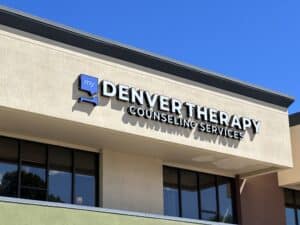We know therapy works. Study after study confirms that psychotherapy helps the vast majority of people improve their well-being, learn coping skills, and lead more fulfilling lives. We’ve even explored how effective therapy can be right here on our blog.
This leads to a critical question: If therapy is so beneficial, why aren’t more people accessing it?
The reality is that a significant “treatment gap” exists in mental healthcare. Millions of Americans who could benefit from therapy face substantial roadblocks that prevent them from starting or continuing treatment. Understanding these barriers is crucial, both for individuals navigating the system and for us as providers committed to increasing access.
The Scale of the Problem: Mental Health Treatment Gap Statistics
The numbers paint a stark picture of how many people are struggling without professional support:
- The Overall Gap: According to Mental Health America (MHA), over half (54.7%) of adults with a mental illness in the U.S. do not receive any treatment. That translates to over 28 million individuals facing challenges without professional help. (Source: MHA – The State of Mental Health in America)
- Substance Use Disorders: The gap is even wider for those with substance use disorders, with an estimated 93.5% not receiving treatment.
- Anxiety & Depression: Despite being highly treatable, access remains an issue. Globally, only about 1 in 4 people with anxiety disorders get treatment (Source: WHO). And recent CDC data shows only about 39.3% of U.S. adults and teens with depression received counseling or therapy in the past year (Source: CDC).
These aren’t just numbers; they represent individuals, families, and communities impacted by untreated mental health conditions. So, what’s stopping people from getting the help they need?

Unpacking the Barriers: Why People Don’t Seek Therapy
While individual circumstances vary, research points to several common roadblocks:
1. Cost and Insurance Hurdles: Concerns about affordability are a major factor. One survey found 17% of adults couldn’t get needed care because their insurance didn’t pay enough or they couldn’t afford the cost. Navigating insurance benefits, understanding deductibles and copays, and finding affordable out-of-network options can feel overwhelming.
2. Access, Availability, and Time: Simply finding the right help can be challenging.
- Knowing Where to Look: 27% of people reported not knowing where they could receive services. Finding a qualified therapist who is accepting new clients and specializes in your area of need takes effort.
- Time Constraints: Life is busy. 19% cited lack of time as a barrier. Scheduling appointments, commuting, and taking time off work or away from family duties can be difficult.
- Provider Shortages: In some areas, particularly rural ones, there may be a shortage of mental health professionals, leading to long wait times. MHA notes provider-to-population ratios can be challenging.
3. Stigma and Uncertainty: Despite progress, mental health stigma still exists.
- Fear of Judgment: Worrying about what others might think, or feeling ashamed for needing help, prevents many from reaching out.
- Minimizing Struggles: Some people convince themselves their problems aren’t “bad enough” for therapy or that they should be able to handle things on their own.
- Uncertainty About the Process: Not knowing what therapy entails, how it works, or if it’s the “right” approach can cause hesitation.
Bridging the Gap: Our Commitment at My Denver Therapy
We recognize these barriers are real and challenging. At My Denver Therapy, we are committed to making quality mental healthcare more accessible:
- Clarity: We provide clear information about our services, therapeutic approaches, and our team of therapists.
- Flexibility: We offer telehealth therapy options, allowing you to connect with your therapist from the comfort and convenience of your own home, saving travel time and increasing accessibility.
- Information: Through our blog and resources, we aim to demystify therapy, reduce stigma, and answer common questions.
- Support: We strive to create a welcoming, non-judgmental environment from the first contact. We’re happy to answer questions about the process, fees, and finding the right fit.
Finding therapy shouldn’t feel like another insurmountable obstacle.
You Deserve Support
The mental health treatment gap is a complex issue, but individual barriers can often be overcome. If you’ve been hesitant to seek therapy due to cost, time, uncertainty, or other concerns, please know that your struggles are valid, and support is available.
Investing in your mental health is investing in your overall well-being. Don’t let these common barriers prevent you from exploring the possibility of feeling better.
Have questions about getting started? We’re here to help. Contact My Denver Therapy today.







